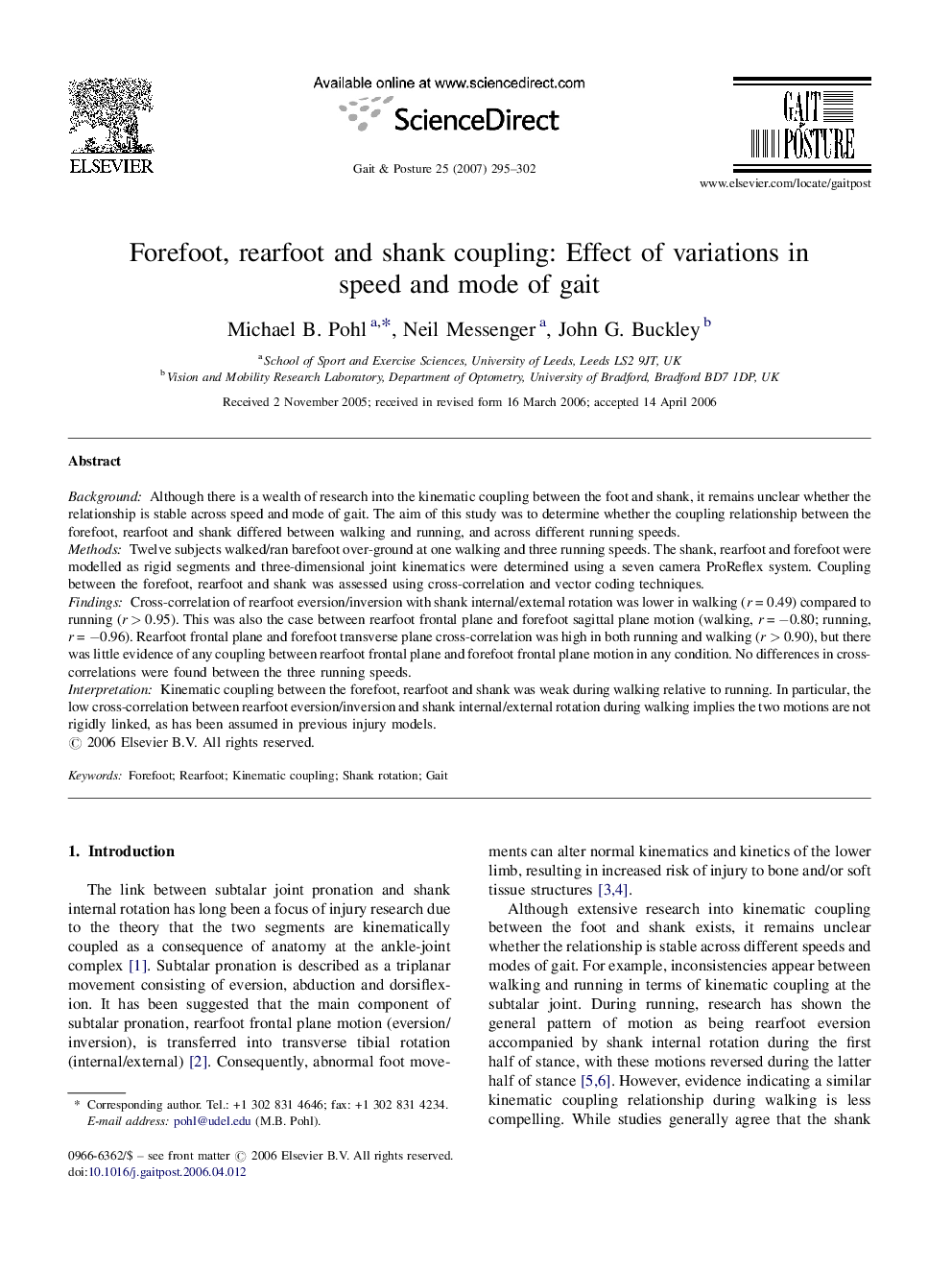| Article ID | Journal | Published Year | Pages | File Type |
|---|---|---|---|---|
| 4058603 | Gait & Posture | 2007 | 8 Pages |
BackgroundAlthough there is a wealth of research into the kinematic coupling between the foot and shank, it remains unclear whether the relationship is stable across speed and mode of gait. The aim of this study was to determine whether the coupling relationship between the forefoot, rearfoot and shank differed between walking and running, and across different running speeds.MethodsTwelve subjects walked/ran barefoot over-ground at one walking and three running speeds. The shank, rearfoot and forefoot were modelled as rigid segments and three-dimensional joint kinematics were determined using a seven camera ProReflex system. Coupling between the forefoot, rearfoot and shank was assessed using cross-correlation and vector coding techniques.FindingsCross-correlation of rearfoot eversion/inversion with shank internal/external rotation was lower in walking (r = 0.49) compared to running (r > 0.95). This was also the case between rearfoot frontal plane and forefoot sagittal plane motion (walking, r = −0.80; running, r = −0.96). Rearfoot frontal plane and forefoot transverse plane cross-correlation was high in both running and walking (r > 0.90), but there was little evidence of any coupling between rearfoot frontal plane and forefoot frontal plane motion in any condition. No differences in cross-correlations were found between the three running speeds.InterpretationKinematic coupling between the forefoot, rearfoot and shank was weak during walking relative to running. In particular, the low cross-correlation between rearfoot eversion/inversion and shank internal/external rotation during walking implies the two motions are not rigidly linked, as has been assumed in previous injury models.
